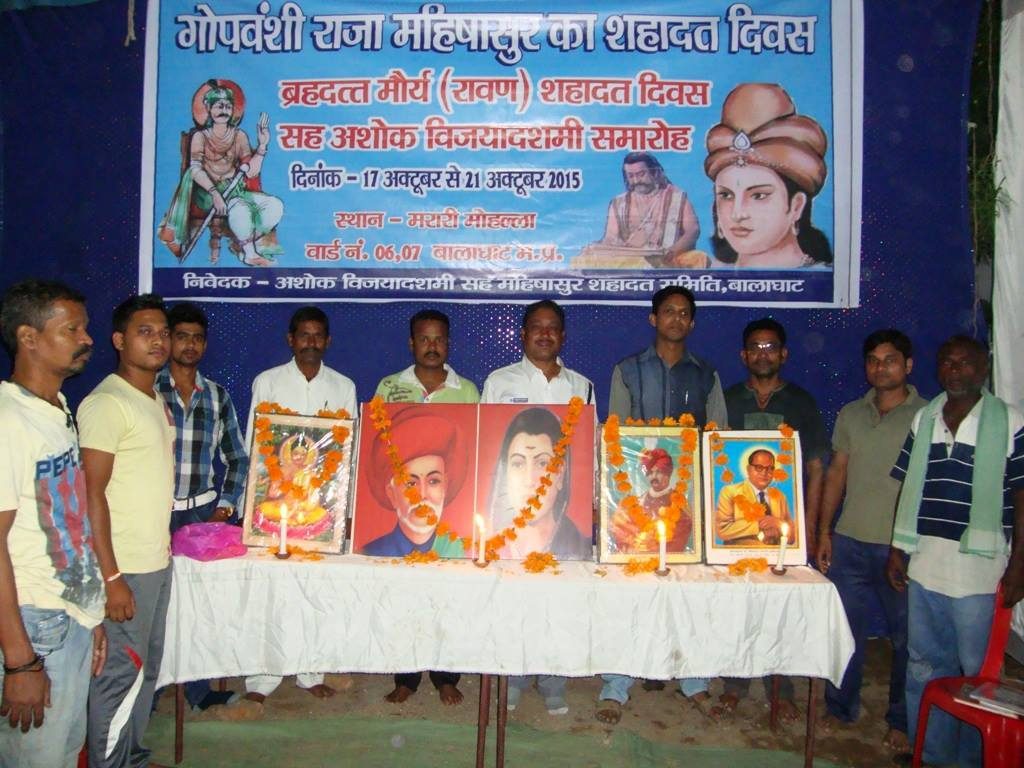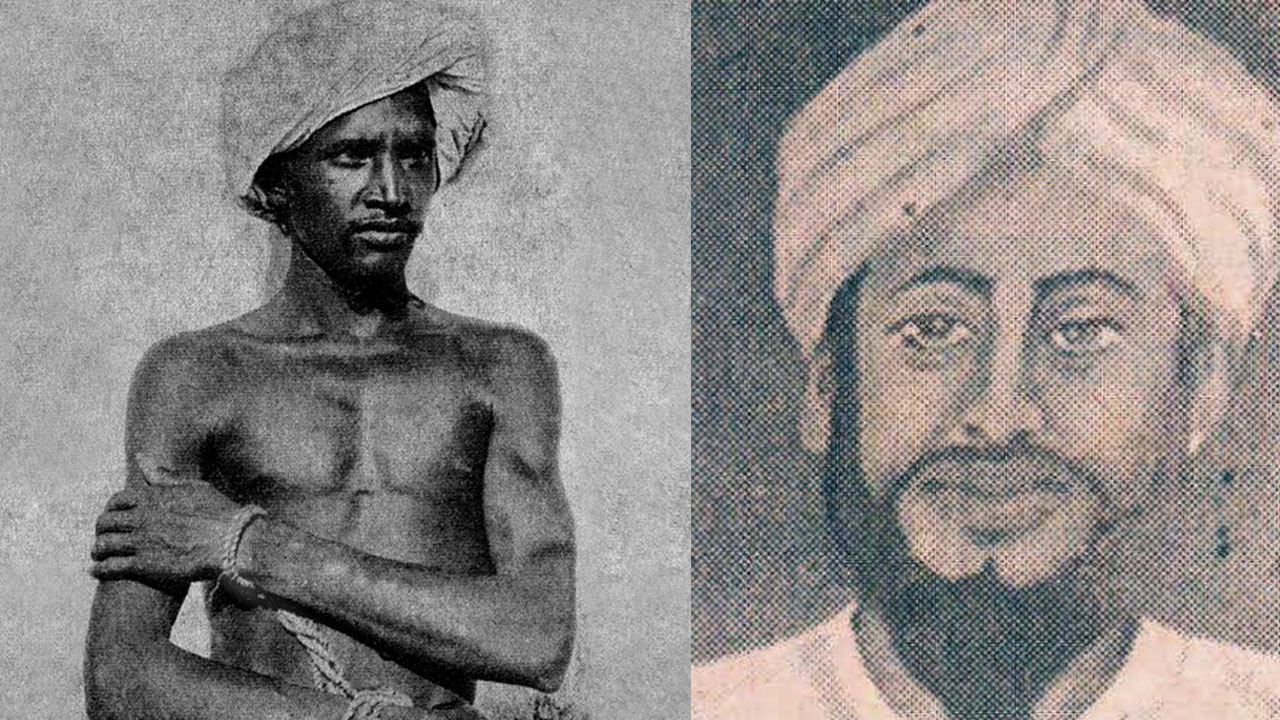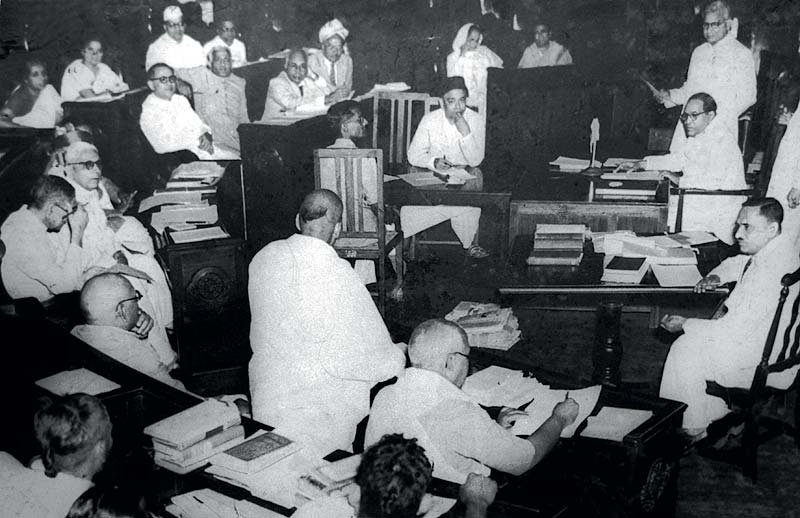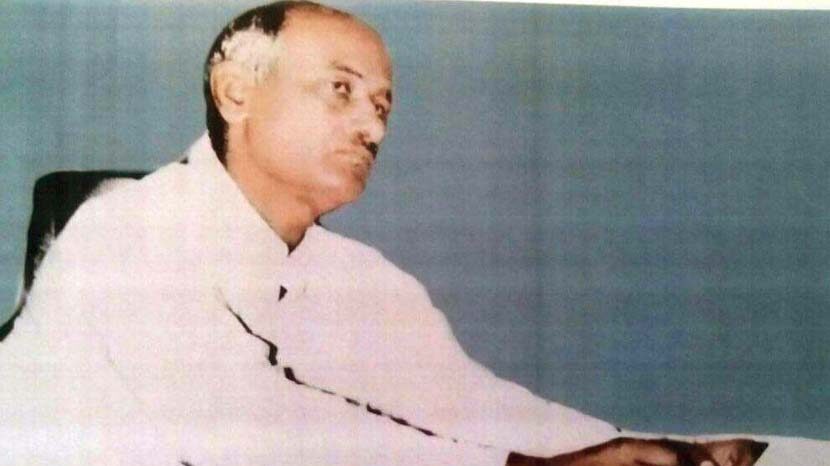What do we know about Mahishasur and Durga?
The Indian subcontinent has not had a systematic tradition of history writing. Therefore, ascertaining the period when Mahishasur lived and the day of his martyrdom is difficult. We find a story about Durga in Markandeya Purana, which historians say was written between between 250-500AD. On the basis of this information, it can be assumed that the events surrounding Mahishasur took place before this text was written – that is around 2000 to 2500 years ago. However, while Markandeya Purana is the only text that sheds light on the culture related to Mahishasur, it provides distorted

information. There is more reliable information on Mahishasur available in our folk traditions and Bahujan legends, although they don’t tell us the exact period in which Mahishasur lived. What we discover from them is that Mahishasur must have been a historical character rather than a mythical one. However, to understand this tradition, we need to explore those traditions different from brahmanical traditions. Noted historian D.D. Kosambi has referred to Mahishasur as the deity of shepherds who, according to the “Brahmin religion”, was killed by “Mahishasur Mardini” (Praachin Bharat ki Sanskriti aur Sabhyata, Rajkamal Prakashan). On the other hand, Debiprasad Chattopadhyaya cites evidence in a chapter titled “Original Source of Durga Puja” of his book Lokayat: A Study in Ancient Indian Materialism, published in 1959, to prove that “there is nothing in Durga Puja that could be clearly called religious or spiritual, this puja is only a kind of totemism related to agriculture”. It becomes clear after studying different sources that Durga in the form of a goddess is only a mythical character and a figment of imagination of the Brahmins, while Mahishasur is a real character, who was a brave, egalitarian and popular mass leader.
When should we celebrate Mahishasur Martyrdom Day?
Mahishasur Martyrdom Day should be celebrated on Sharad (Ashwin) Purnima of every year. You can also call it Mahishasur Memorial Day. It is both a martyrdom day and a memorial day. According to Adivasi legends, Durga, who was sent by foreign invaders (who have been called gods in brahmanical scriptures and are today known as dwijs),

reached the castle of Mahishasur on the 16th day of the month of Ashwin and the seventh day of the Shukla Paksha. Durga opened the gate of the castle so that the “gods” hiding nearby could carry out an assault on Mahishasur. The “gods” had been in a bad state, hiding in the bushes with their weapons and feeding on plants. There was fierce fighting for two days. Despite the “gods” having cheated him and launched a sudden attack, Mahishasur held his ground. Hence, on the ninth day of the battle, the “gods” sent Durga to the front line because they knew Mahishasur was a virtuous man who had taken the vow to protect women and animals.
The “gods thus killed a valiant social, cultural and political leader, and a genocide followed. It is this murder and genocide that is celebrated on Dussehra, on the tenth day of the month of Ashwin. This festival is the celebration of the killing of the hero and the ancestors of Bahujans. According to legends popular among the Tribals and different non-brahmanical castes, on the fifth day after the killing of Mahishasur (five days after Dussehra), the day of Sharad Purnima, the followers of Mahishasur held a huge meeting where they resolved to get back their lost prosperity and keep their culture alive. It is in memory of this event that Mahishasur Martyrdom Day should be held on the day or the night of Sharad Purnima. The Asur-Shraman-Bahujan tradition places great importance on Sharad Purnima. In the myths about Krishna, this day is celebrated as “Kaumudi Festival” while in the life of Buddha this day is considered the beginning of a new journey.
In the Modern Age, the hero of Indian Bahujans and social revolutionary, Mahatma Jotiba Phule, has written that in the morning before the wedding, the Bahujan bridegroom should worship his Creator and pay his respects to Mahishasur (Mahatma Jotiba Phule Omnibus, “Marriage rites for Satya Sodhak Samaj”, Radhakrishna Prakashan).
What should the organizers bear in mind?
Certain methods that have evolved within the last few years have been accepted by everyone:
- There must be a concerted attempt to ensure the participation of women.
- The celebration should go on for seven days. It should begin on the day when Mahishasur was killed (the 24th day of the Ashwin month/Navami of Dussehra) and continue till Sharad Purnima. Keep the main celebration for Sharad Purnima. Where people don’t have the time to organize an event on this scale, they can have a daylong celebration on Sharad Purnima.
- The celebrations can also be held privately, among family and friends. A big portrait of Mahishasur should be garlanded and a seminar held. Readings of literature related to Birsa Munda, Jotiba Phule, Narayan Guru and Dr Ambedkar could also be part of the event.
-

An Asur man in Bishunpur, in Jharkhand’s Gumla district, plays a traditional musical instrument If possible, organize a symbolic death procession of brahmanical texts like Durgasaptsati and Markandeya Purana or any other scripture that holds Bahujans in contempt. This procession should begin at the venue and end at the power centres (that is the legislative assembly for a state-level programme; the administration headquarters for a district-level programme; the subdivision headquarters; the panchayat office of a village; or a public community centre if none of the others is accessible).
- The burning of the texts must be carried by a reputed lady of the area.
- Games and painting competitions can be organised to honour Mahishasur.
- Traditional songs of labour sung by Bahujans like Birha, Faruwahi, Kahruwa and Jatsar and sowing songs may be performed.
- Dramas based on folktales related to Bahujan heroes can be staged. Creative young writers should be encouraged to write new plays based on these subjects from a Bahujan perspective and their plays staged.
- These events should be filmed and broadcast using the latest mediums and technology and the videos should be preserved.
- The most important objective of this programme is for the Bahujan community to resolve to stay united, reestablish its culture and get back its lost material prosperity. The speeches, seminars, etc should be centred on these themes.
(This is an edited version of the material prepared by the organizers of the 2013 Mahishasur Martyrdom Day in JNU with the help of cultural activists from other universities. It was originally published in Hindi in the booklet Mahishasur (2014). Forward Press does not support idol worship in any form and appeals to Mahishasur Day organizers to refrain from installing Mahishasur idols. -Editor)
Translation: Sandeep Kumar Yadav
Updated: 30 October 2018, 4pm
For more information on Mahishasur, read Mahishasur: Ek Jananayak.
Click here to purchase a copy of the book on Amazon
The English edition of the book has been titled Mahishasur: A People’s Hero. Copies are available here on Amazon.
For the e-book version, click here
For bulk orders, contact Forward Press. Phone: 9968527911, 7827427311; e-mail: fpbooks@forwardpress.in





